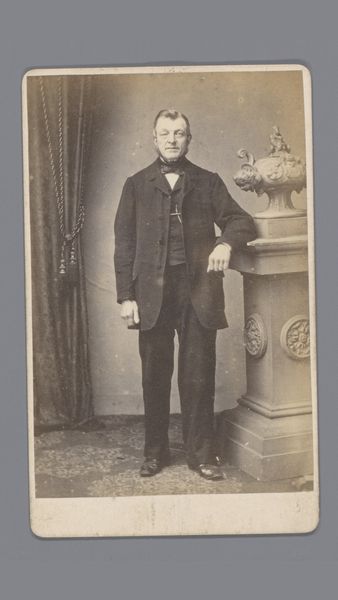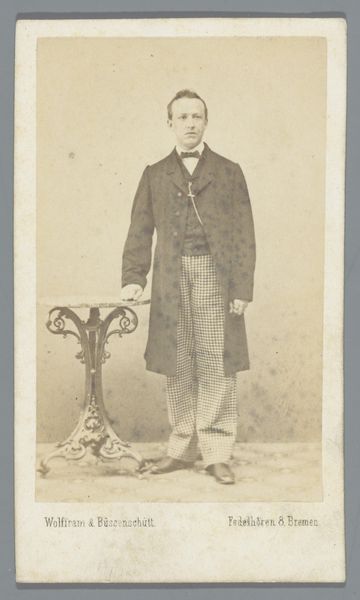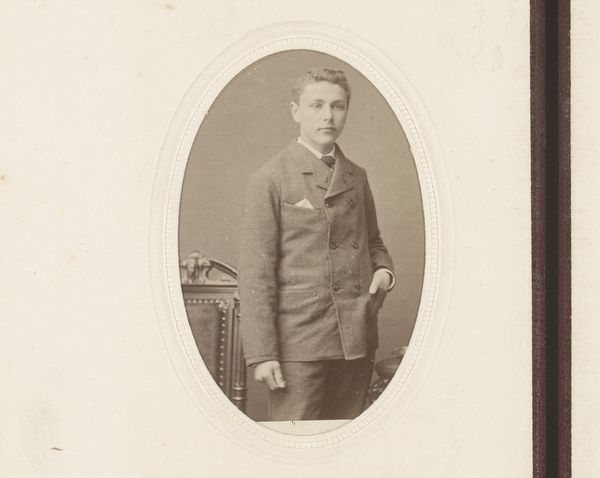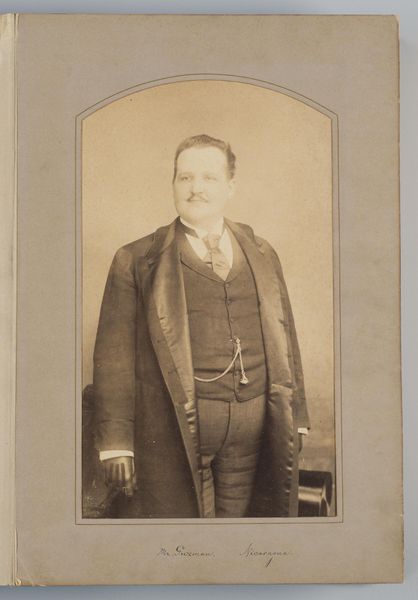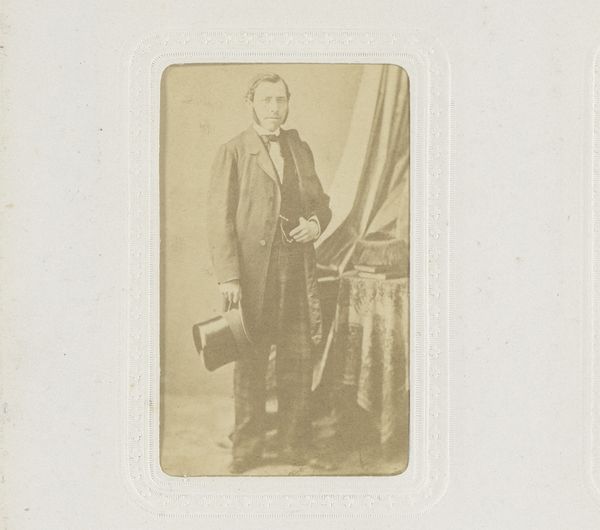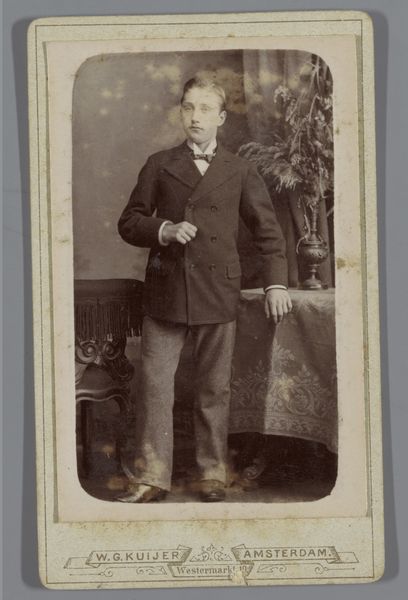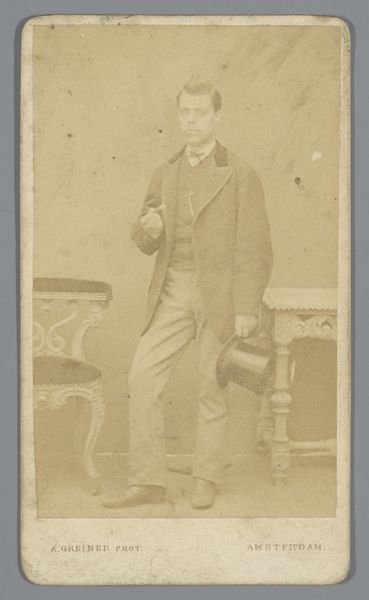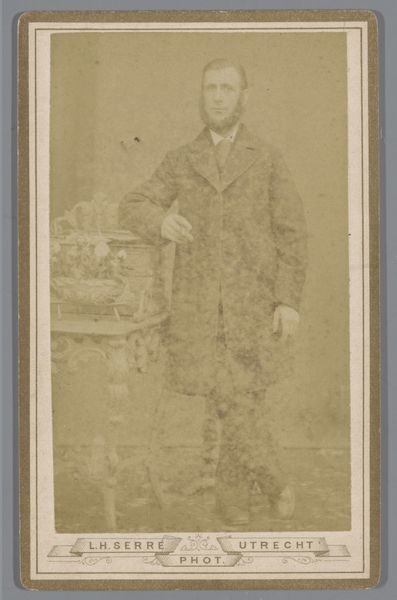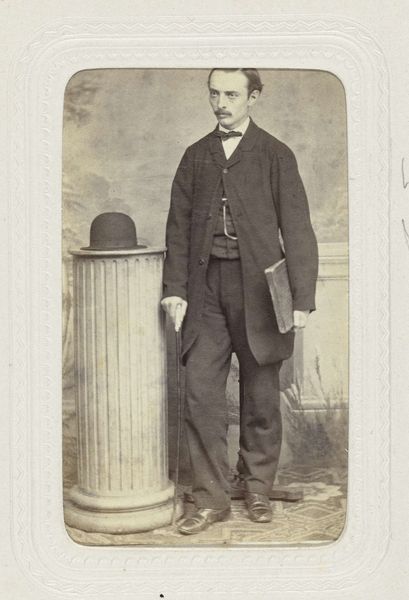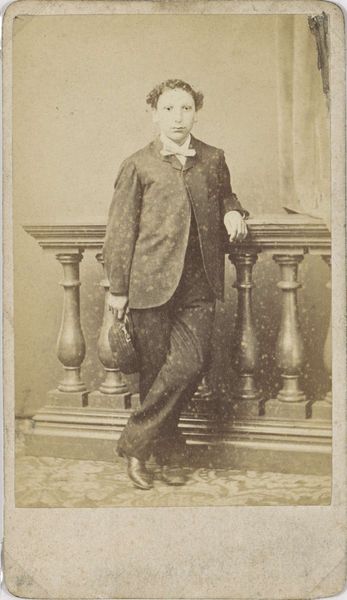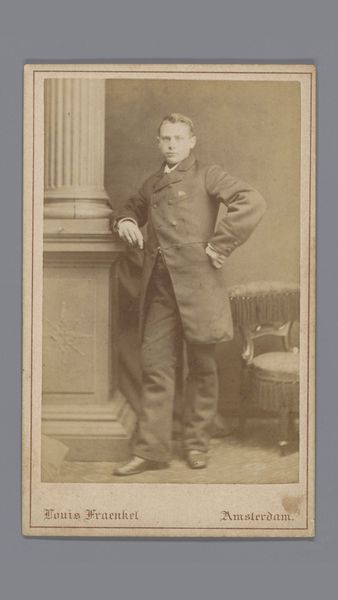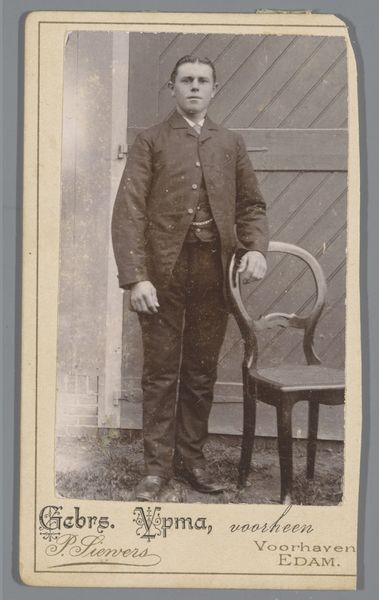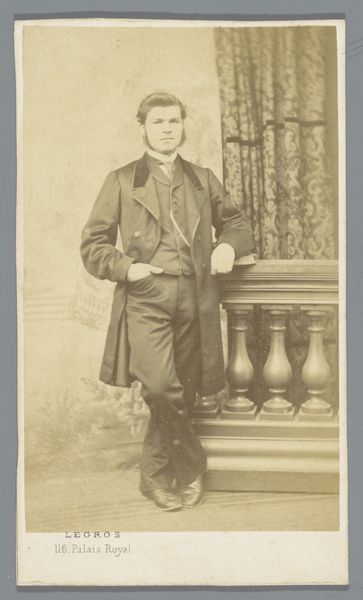
Studioportret van een man staand aan tafel bij een achtergronddoek c. 1863 - 1866
0:00
0:00
daguerreotype, photography
#
portrait
#
vintage
#
daguerreotype
#
archive photography
#
photography
#
historical photography
#
19th century
Dimensions: height 80 mm, width 54 mm, height 296 mm, width 225 mm
Copyright: Rijks Museum: Open Domain
Editor: Here we have a daguerreotype from around 1863-1866, titled "Studio Portrait of a Man Standing at a Table with a Backdrop," attributed to Willem Gerhardus Kuijer and held at the Rijksmuseum. The subject’s stance feels quite formal and reserved, typical of the era I suppose, yet there's something compelling in its stillness. What do you see in this piece that speaks to its time, and perhaps even beyond? Curator: Beyond the sitter's physical likeness, this daguerreotype transmits a wealth of cultural information, wouldn't you agree? Think about the drape, the table: they signify status, a desire for permanence, almost an immortality granted by the new medium. Notice the small object, probably a watch, hanging around his neck. Do you consider what that symbolizes in a world becoming increasingly industrialized and timed? Editor: I hadn't considered the watch as a symbol! I was so focused on the more obvious elements like the backdrop and the clothes. So you see this portrait as not just an image of a man, but an artifact loaded with markers of societal shifts. Curator: Exactly. Consider this image against the backdrop of the rise of the middle class, photography democratizing portraiture… Does it alter your perception of its cultural value, now? Editor: It does. I was initially seeing it as a stiff historical portrait. Now I am thinking about what a luxury it was, but that it still marks a new access that wasn’t available before. I appreciate how it really serves as a document and reflection of that burgeoning sense of middle-class identity. Thank you! Curator: It has been my pleasure. Understanding the symbolic weight enriches not only our view of art, but also of human history.
Comments
No comments
Be the first to comment and join the conversation on the ultimate creative platform.
